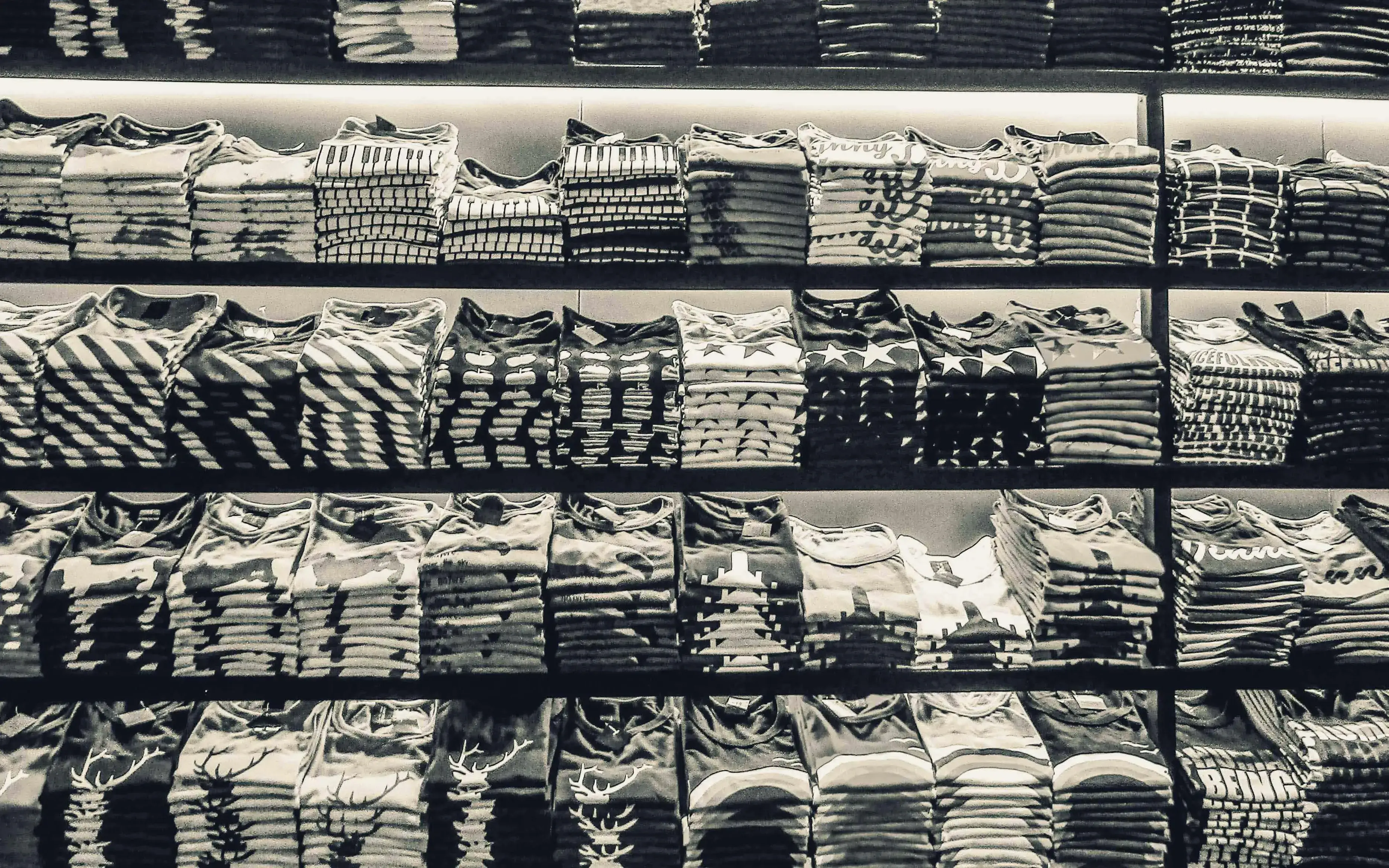Ayesha Barenblat, founder and CEO of remake, shares with us the beginnings and purpose of the organization fighting for fair pay and climate justice.
When and why was Remake created?
On April 24th 2013 Rana Plaza fell down. It was the worst industrial disaster of our time where over 1,134 young lives were cut short when a building collapsed that housed several factories.
Having worked on the inside of the industry for a long time, I had made the business case for retailers to invest in the lives of garment makers. When Rana Plaza fell down, it became clear to me that it would take a groundswell of consumer demand to truly move the needle. What we needed was a people’s movement to say no more deaths, human rights abuses and environmental degradation in our quest for cheap clothes. This is the inspiration to found Remake in 2015.
What are your main actions to achieve these goals?
Remake has engaged with millions of fashion lovers serving as a leading voice in the conversation of consumption habits and providing free advocacy training. Our Ambassador program, classroom lectures, workshops, stories and teaching modules are expanding the pipeline for next generation activists.
Additionally, our advocacy work is focused on building coalitions with like-minded individuals, businesses, organizations and unions to pass smart policies that disrupt the current narrative. Together we’re able to shift hearts and minds, driving systemic change through legislation, campaigns and initiatives.
What is the actual situation in the fashion industry? What does the data say?
Today, over 100 billion garments are produced annually worldwide. This massive overproduction places fast fashion in critical opposition with the planet’s natural capacity to support life on earth.The clothing industry’s annual volume growth rate is 2.7%, meaning total resource consumption will continue to outstrip any sustainability efforts the industry may make unless large-scale, urgent efforts are made by the companies that profit from garment production.
And what does the data say about workers?
While the rate that clothing is produced comes at an enormous environmental cost, it comes at an even larger cost to the women who make it. Here enters the story of 70 million garment workers, the highly skilled essential workers of the clothing industry, who are largely invisible to consumers. 80% are women of color and forced to work in unsafe factory conditions with limited access to fresh air or natural light. Sanitation, food and potable water are largely inaccessible, making heat exhaustion and dehydration prevalent. Worst of all, gender-based violence is common inside these workplaces.
What are the main problems? How does it impact the environment?
In the last decade, our clothes have been coming to us too fast and too cheap and the human and planetary costs of this hyperconsumption model are hidden from our collective consciousness. I believe both the general consumer wanting new outfits for the next IG selfie plays a part but it is also companies like Amazon that have conditioned us to with one click to get whatever we want, whenever we want. The implications of this includes:
-
Planetary destruction: The largely unregulated churn and burn of fast fashion is putting too much pressure on our planet. While 110 million tons of textiles are produced annually, 92 tons are disposed of each year, much of which goes to landfill. And with ⅔ of textiles containing polyester, spandex, nylon and acrylic, it’ll take close to 200 years for them to decompose fully. In the meantime, decomposing clothes contain dangerous chemicals, microplastic fibers, and release greenhouse gasses putting both the planet and the health and well-being of communities near these landfills at risk. Additionally, main cotton producing countries like China and India are already facing water shortages, and with water consumption projected to go up by 50% by 2030, these cotton-growing nations face the dilemma of choosing between cotton production and securing clean drinking water.
-
Fast fashion disempowers women. With fast fashion you trap a generation of young women into poverty. 70 million people are making our clothes today. 80% is made by women who are only 18 – 24 years old. It takes a garment worker 18 months to earn what a fashion brand CEO makes on their lunch break. A majority of them earn less than $3 per day. The biggest corners of fashion cuts are human. Cheap clothes are made by underage workers entering the industry as young as 14 to work long hard hours (an avg. of 14 hrs per day in sweatshops) for low wages, while dealing with sexual harassment.
-
Fast fashion is expensive for consumers and the planet. Fast fashion is designed to be replaced quickly. Clothing literally falls apart ending up in landfills rather than making it to consignment shops even if you donate. In the U.S. only 10%-20% of donated clothes get resold. The rest flood landfills where they can sit for up to 200 years leaving toxic chemicals and dyes to contaminate local soil and groundwater. Our slow fashion community has found that investing in fewer higher quality clothes actually saves us money because each piece lasts longer.
What can we change about it? What are the alternatives?
The first step is to educate yourself and raise awareness: Start by learning about the issues faced by garment workers, such as low wages, unsafe working conditions, and exploitation. Understand the impact of fast fashion on workers and the environment. Then take that information and share it with your family, friends, and social media followers. Encourage others to make conscious choices when purchasing clothing.
What would be the next step?
Research brands and demand transparency from them: Before making a purchase, research the fashion brands you are interested in. Look for companies that prioritize ethical and sustainable practices and have transparent supply chains. Demand more transparency from fashion brands regarding their supply chains, factory conditions, and wages.
If you can’t find what you're looking for, reach out to fashion brands through social media, email, or their customer service to inquire about their labor practices and supply chain transparency. Brands that care about their workers and sustainability will be happy to provide this information.
Once we have been informed we have to take action... How do we do it? Support ethical brands and boycott unethical ones: Choose to buy from fashion brands that have fair labor practices, use sustainable materials, and prioritize workers' well-being. By supporting these brands, you contribute to the demand for responsible fashion. Refrain from purchasing from fashion brands with known unethical practices. When brands see a decline in demand due to unethical behavior, they may be motivated to change their practices.
Is there anything else we can do?
Support legislation and advocacy: Stay informed about labor rights and environmental legislation related to the fashion industry in your country. Support organizations and campaigns that advocate for better working conditions and fair wages for garment workers. Not only the production of these clothes is harmful for climate change but also the waste problem of this clothes and this industry. What can we do about it?
Lower your consumption of new apparel - it’s the best way to practice sustainability! Shop your closet, repurpose clothes you don’t want or partake in a clothing swap with friends. And rent for special occasions. Thrifting, or secondhand shopping is best if you need to purchase something. And when you do purchase anything (new or old), be mindful of what you buy and buy purposefully.
You have to think before you buy compulsively
Before making a purchase, take a moment to imagine yourself wearing the item again and again. Ask yourself some questions like “Is it really your style (not just the trend of the moment)?”, “Does it flatter your body shape?”, “What does it say about who you are and what you stand for? or “Will you wear it at least 30 times?”.
By simply taking a moment to thoughtfully consider all purchases, we not only end up with clothes that truly reflect our taste and values, but we end up with less stuff which also means less waste.
However, thinking about the new generations and organizations like yours, do you think that important changes are taking place in the industry to move towards a new, more sustainable model?
Definitely! I see the demand for fast fashion decreasing as demand shifts, particularly as GenZ comes into their consumer power valuing individuality and customization over trends. I see this firsthand in conversations I have with young change-makers all over the country who worry about climate change and our planet’s future.
Moreover studies show that 89% of Gen Z would rather buy from a company supporting social and environmental issues over one that does not. I also see the fashion industry being pushed toward more transparency.
There are also more and more activists…
Activism is back with women leading the way. From Greta Thunberg to Jane Fonda, there’s been an influx of consciousness that’s here to stay. From Extinction Rebellion to our own community at Remake, I see a future where more and more people are taking to the streets to demand a fashion industry that puts people and our planet first.
Finally circularity is becoming more than just a buzzword, from inroads in sustainable materials to a growing interest in a minimalist lifestyle and capsule wardrobes. I am excited by breakthroughs in technology such as Amber Cycle and innovative approaches to reducing waste such as the Renewal Workshop.
How do you see this situation in 10 years?
If there’s one thing we’ve learned from the global pandemic, it’s how to pivot and come up with new solutions to problems. Fashion is a resourceful industry. If more people buy less or no new clothes at all, I believe we will see a stream of new businesses and business models popping up- whether that’s more rental companies, brands that strictly upcycle, resale platforms, or specialty stores. In short, I see a lot more opportunities for people to start companies or expand into a new market. I believe that an industry full of creatives has the ability to use current resources in order to make something even better - isn’t that why fashion is so amazing?
What needs to change to get there?
Mindful consumerism requires buying less, buying quality, and making purchases from companies that treat workers fairly and pay living wages. For fast fast brands (large and small) not to feel the sting of mindful consumerism, sustainability cannot be retrofitted. Survival for all fast fashion brands would mean ripping off that cheap label which represents the exploitation of people and our natural resources because as the mindful consumerist movement advances, ‘fast fashion’ won’t be forced to slow down…it will be forced to stop.







Add new comment